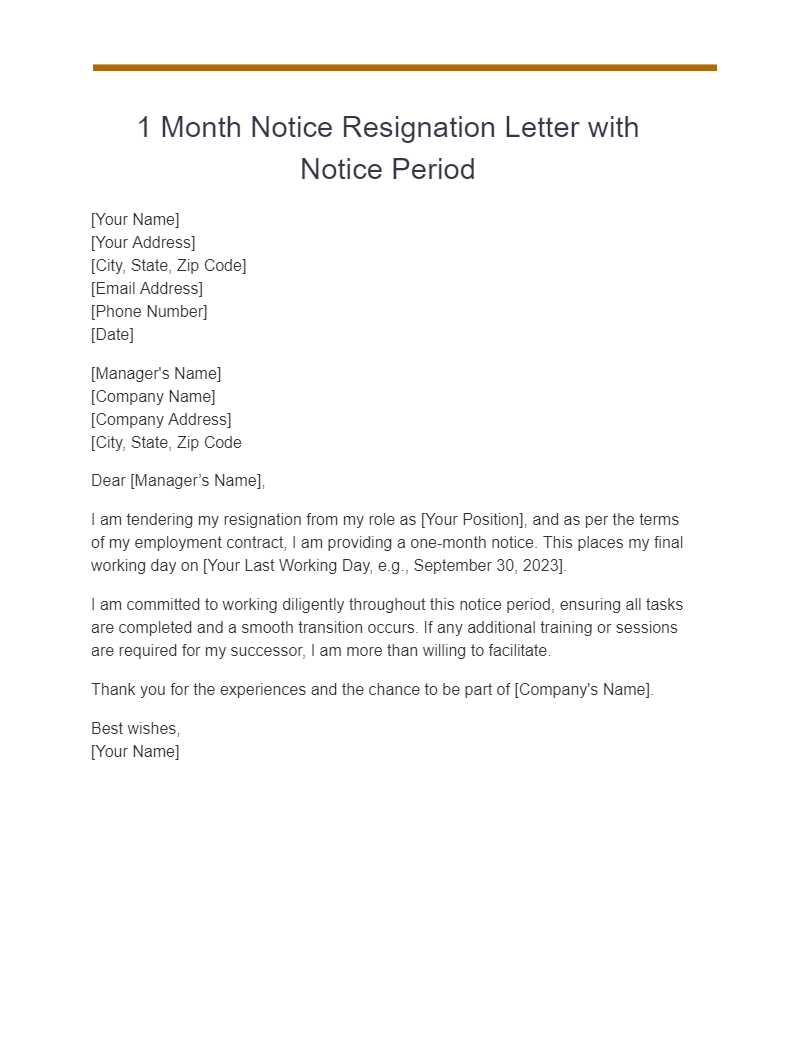
Are you contemplating leaving your current job and need to provide a 1-month notice resignation letter? Crafting a well-written resignation letter is essential to maintain a positive relationship with your employer and leave on good terms.
In this comprehensive guide, we will explore the what, why, and how of 1-month notice resignation letters, along with examples and tips for successful resignations.
What is a 1-Month Notice Resignation Letter?
A 1-month notice resignation letter is a formal document that an employee submits to their employer to announce their intention to resign from their position. This letter typically provides one month’s notice, allowing the employer enough time to find a suitable replacement and ensure a smooth transition. The letter should include the employee’s intention to resign, the last working day, and a brief thank you to the employer for the opportunity.
Providing a 1-month notice is considered a standard practice in many industries, as it gives the employer ample time to make arrangements and minimize disruption to the workflow. It also reflects positively on the employee, demonstrating professionalism and respect for the company.
Why is a 1-Month Notice Resignation Letter Important?
Submitting a formal resignation letter with a 1-month notice period is crucial for several reasons. Firstly, it allows the employer to prepare for the employee’s departure and make necessary adjustments to ensure business continuity. This proactive approach demonstrates professionalism and consideration for the employer’s needs.
Additionally, providing a 1-month notice period gives you the opportunity to tie up loose ends, complete pending projects, and hand over responsibilities to a successor. It also gives you time to train your replacement, if necessary, and ensure a smooth transition for your team.
By adhering to the standard practice of giving a 1-month notice, you uphold your professional reputation and leave a positive impression on your current employer. This can be beneficial for future job opportunities and networking within your industry.
How to Write a 1-Month Notice Resignation Letter
When crafting your 1-month notice resignation letter, it’s important to follow a professional and respectful tone. Here are some key tips to help you write an effective resignation letter:
- Be clear and concise: Clearly state your intention to resign and provide your last working day.
- Express gratitude: Thank your employer for the opportunities and experiences you gained during your time with the company.
- Offer assistance: Express your willingness to assist with the transition and training of your replacement.
- Keep it positive: Maintain a positive tone throughout the letter, even if your reasons for leaving are negative.
- Proofread carefully: Double-check for any spelling or grammatical errors before submitting your letter.
- Provide contact information: Include your contact details so that your employer can reach out to you if needed.
Examples of 1-Month Notice Resignation Letters
For your reference, here are two examples of well-written 1-month notice resignation letters:
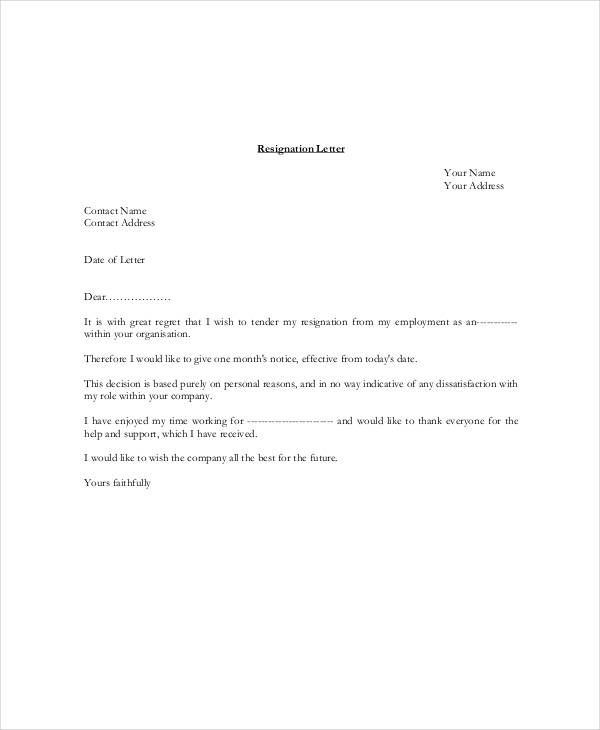
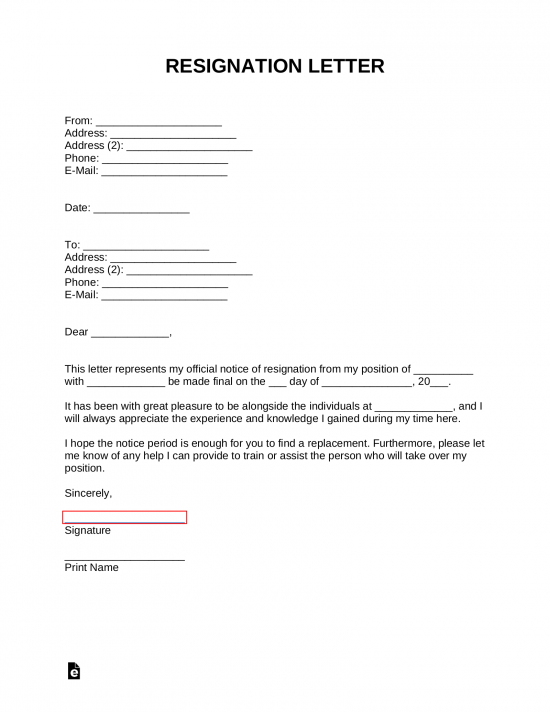
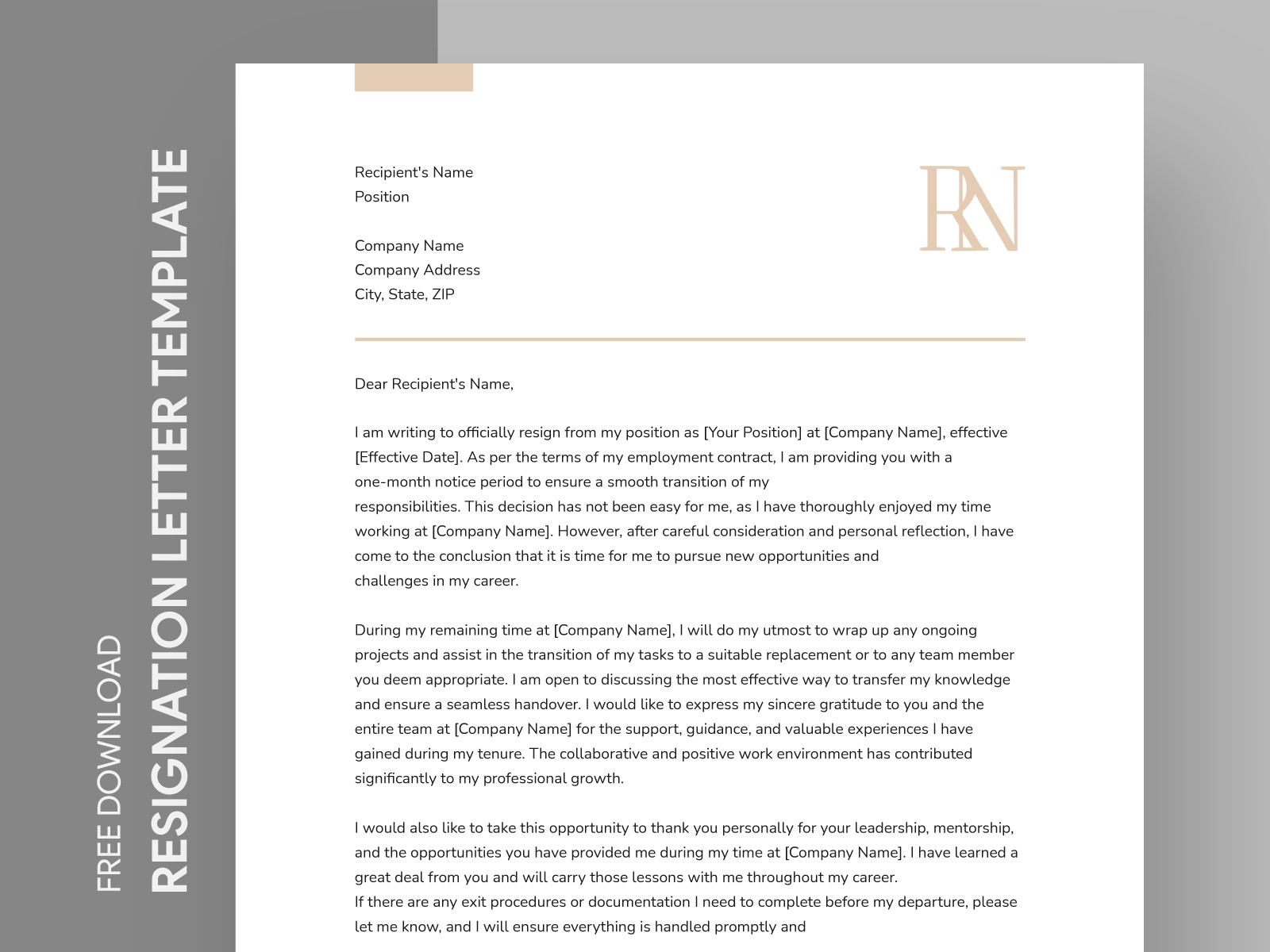
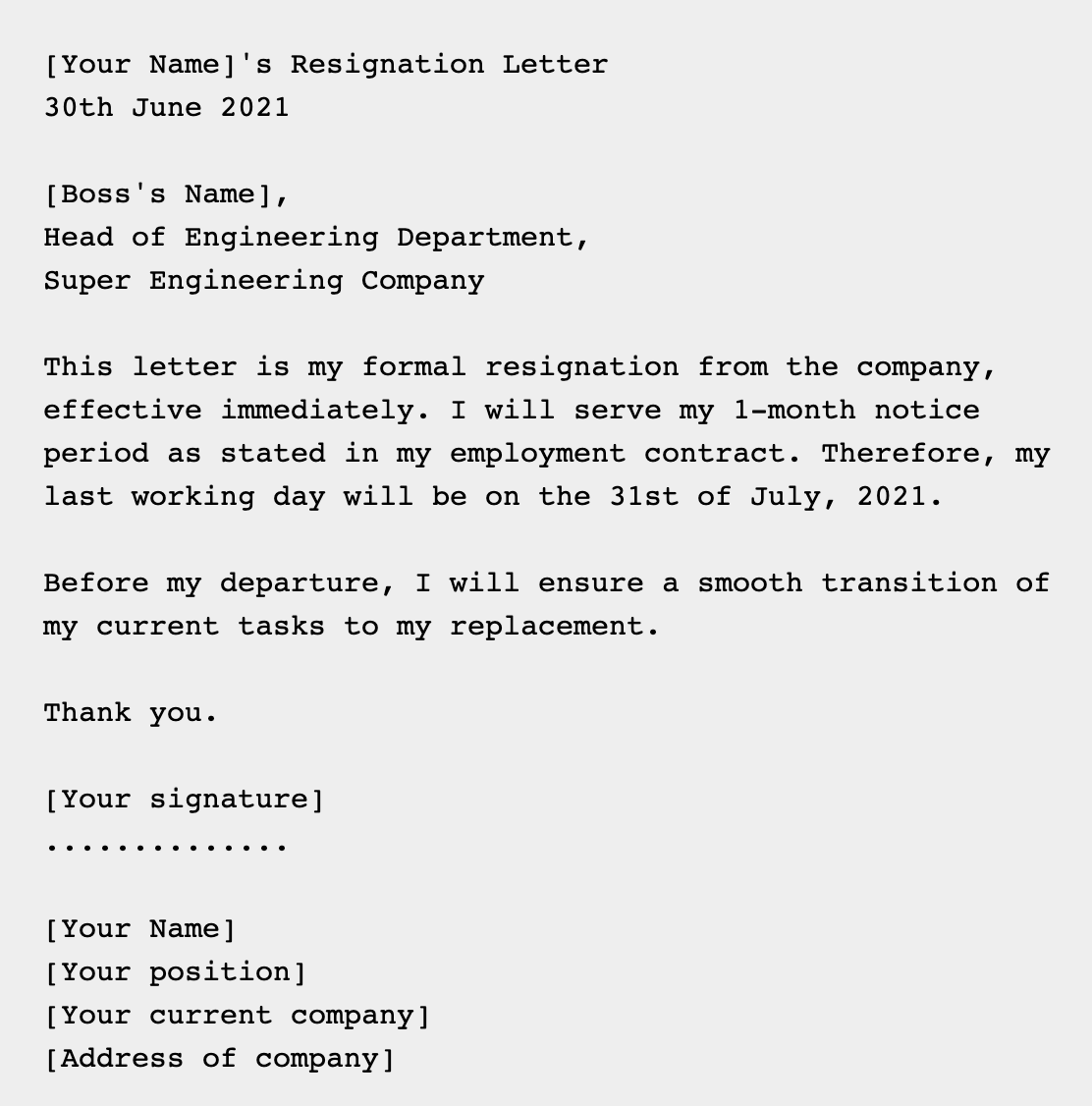

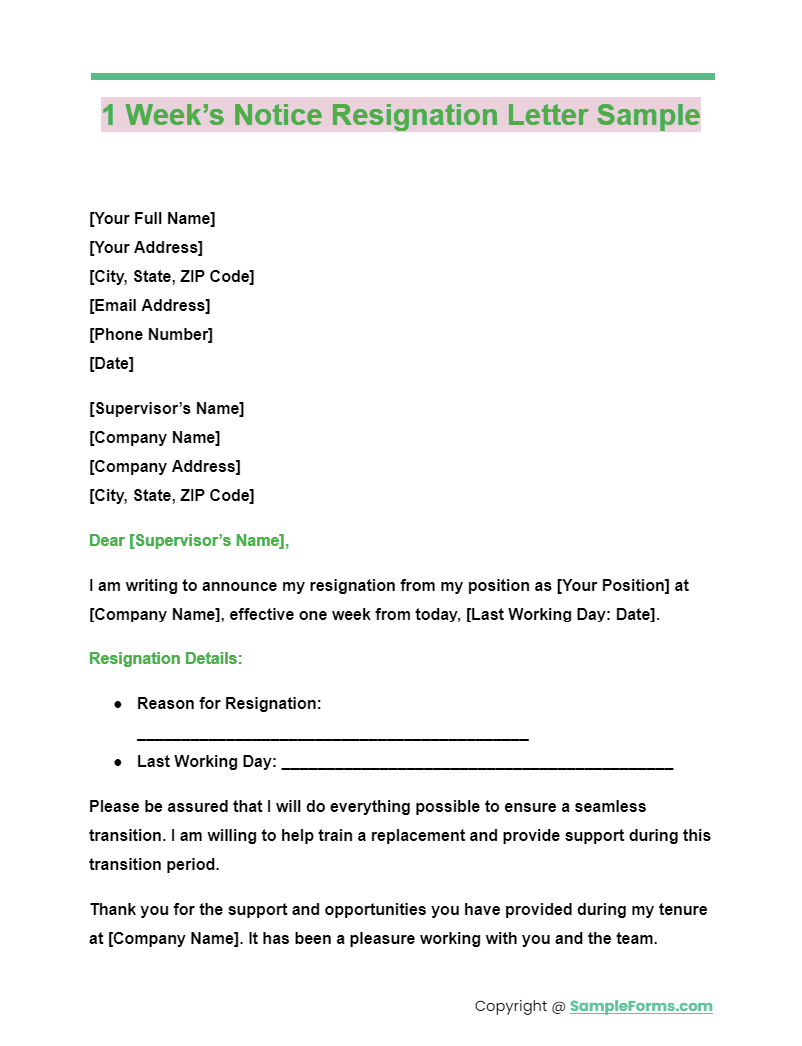

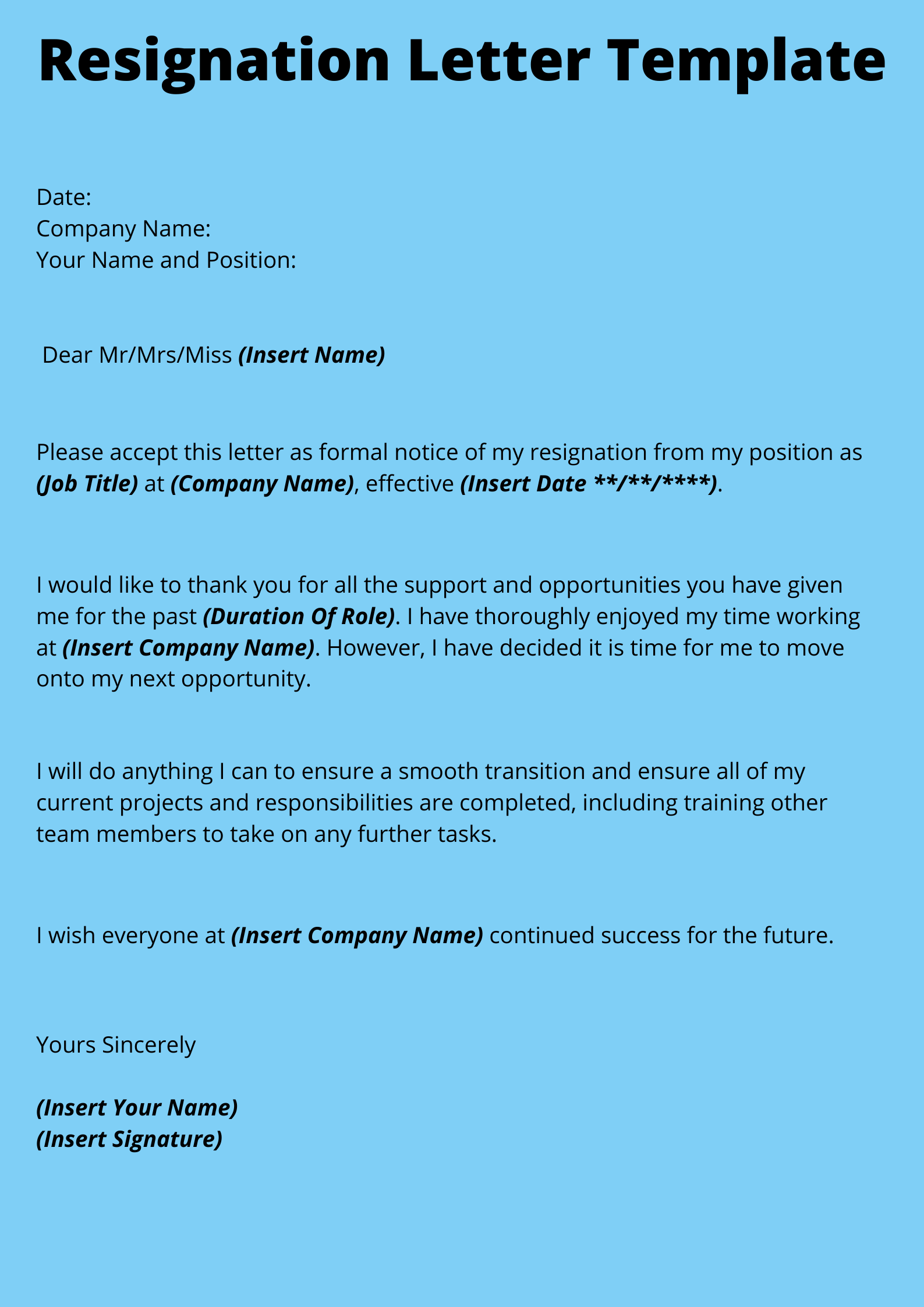
Tips for Successful Resignations
To ensure a smooth and successful resignation process, consider the following tips:
- Plan ahead: Give yourself enough time to prepare for your resignation and tie up loose ends.
- Have a conversation with your manager: Before submitting your resignation letter, have a candid discussion with your manager to explain your reasons for leaving.
- Stay professional: Maintain a professional demeanor throughout the resignation process, even if you have negative feelings towards the company.
- Prepare for the transition: Help train your replacement, document key processes, and ensure a smooth handover of responsibilities.
- Stay in touch: Keep in touch with your colleagues and network within your industry for future opportunities.
In conclusion, providing a 1-month notice resignation letter is a standard practice that demonstrates professionalism, respect, and consideration for your employer. By following the guidelines outlined in this guide and using the examples and tips provided, you can navigate the resignation process with ease and leave on good terms. Remember to approach the situation with a positive attitude and focus on your future career goals.